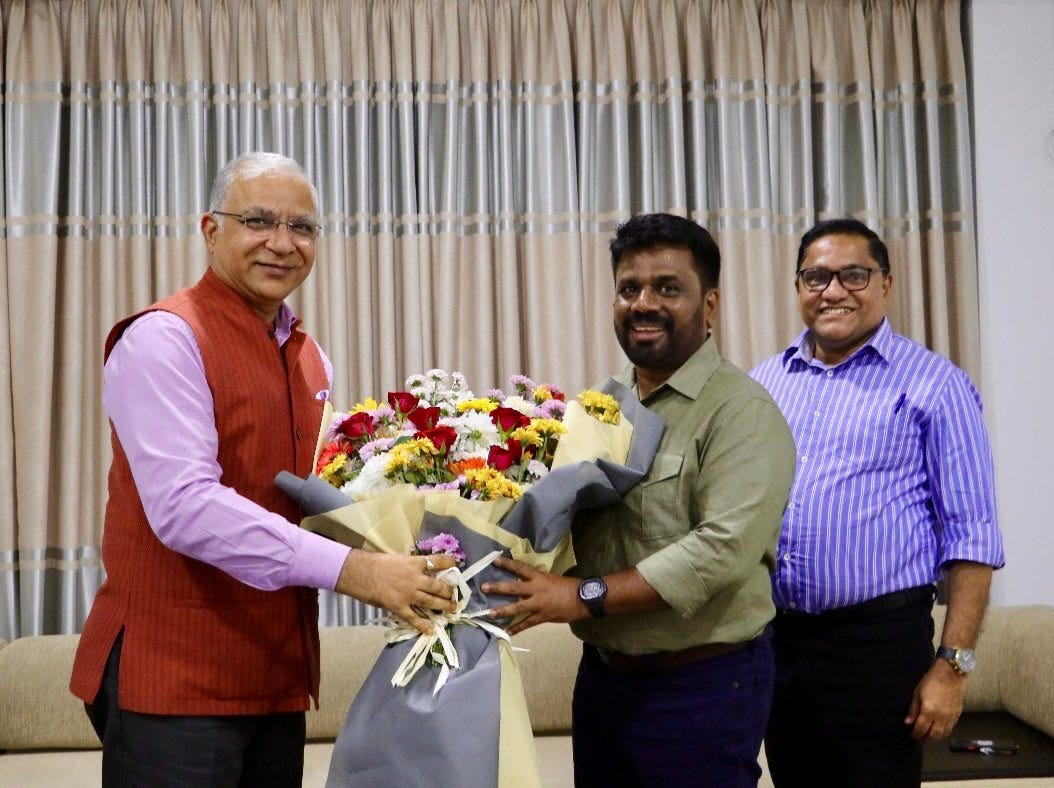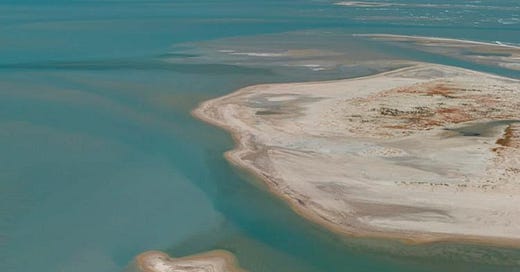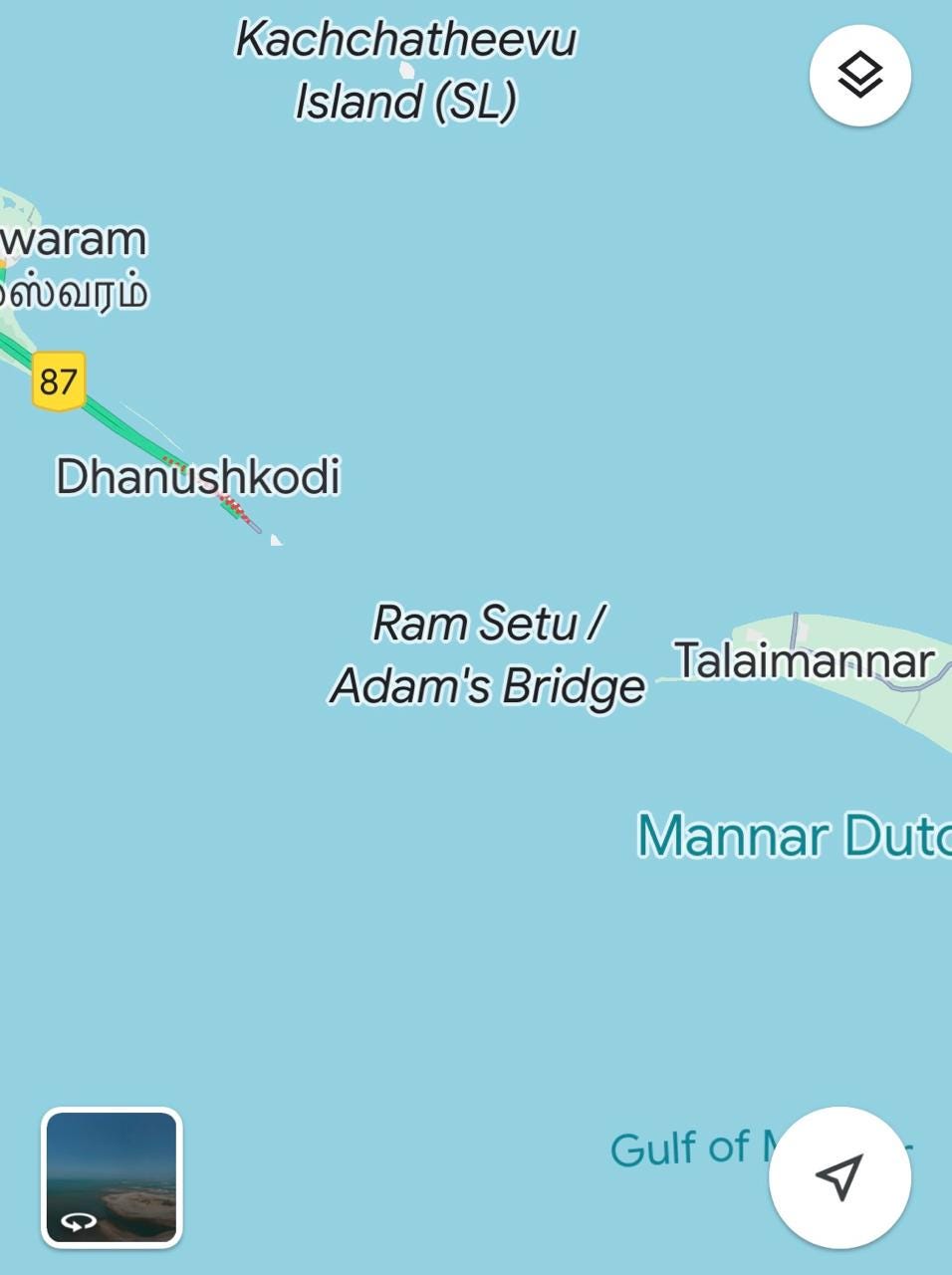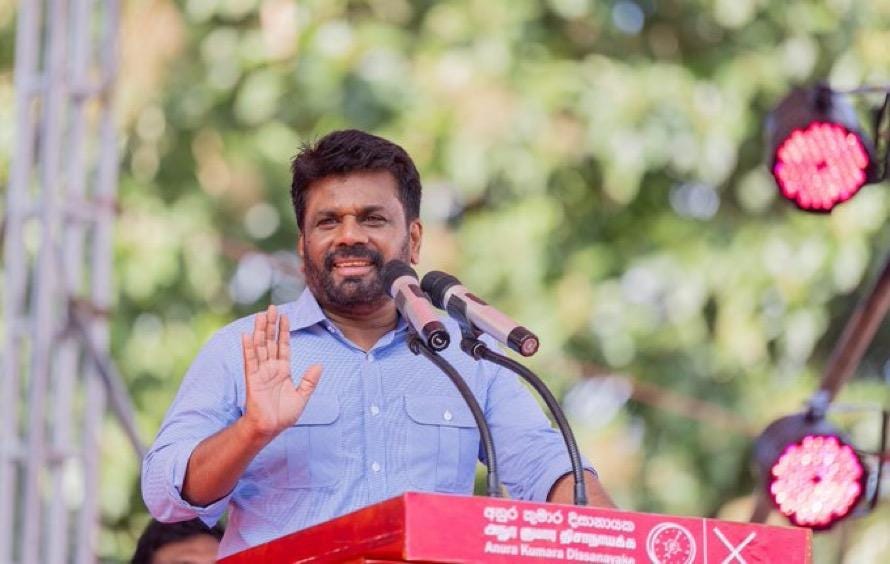India and Sri Lanka on Verge of Approving $5 Billion 'New Ram Setu' Road-and-Rail Link
Renewed Optimism for the $5 Billion Inter-Nation Dream Connectivity Project.
Optimism for the $5 Billion Dream Project
India and Sri Lanka are on the verge of realising a potentially transformative infrastructure project, often referred to as the "New Ram Setu." This ambitious initiative aims to significantly enhance connectivity between the two nations, bridging both geographical and economic gaps. The project received in-principle approval from former Sri Lankan President Ranil Wickremesinghe, and now, under the leadership of newly elected President Anura Kumara Dissanayake (commonly known as AKD), there has been no inherent reluctance, signalling continuity and cautious optimism. Although the specifics are still being finalised, the project stands as a symbol of growing cooperation and shared economic aspirations between India and Sri Lanka.
Historical Background: In-Principle Approval and Transition of Power
The idea of establishing a road-and-rail link between India and Sri Lanka, primarily funded by India, has been under discussion for several years. The project gained significant traction during the tenure of former President Ranil Wickremesinghe, who granted in-principle approval, marking a key step toward enhancing bilateral trade, tourism, and economic growth. With the recent election of President Anura Kumara Dissanayake, leader of the People's Liberation Front (JVP), there were initial uncertainties about the new administration’s stance. However, Dissanayake has shown no ideological opposition to the initiative, indicating a commitment to maintaining continuity and building on the progress already achieved.

Project Details: A Feasibility Study in the Final Stages
At the heart of this $5 billion proposal is a cutting-edge feat of modern civil engineering: a 23-kilometre sea bridge connecting Dhanushkodi in Tamil Nadu, India, with Talaimannar in Sri Lanka. The project envisions a dual road-and-rail link, seamlessly integrating Sri Lanka with mainland India and promising to vastly improve transportation and trade between the two nations. Recent reports indicate that the feasibility study is nearing completion, a crucial step in the project's planning phase. While the exact cost is still being refined, the estimated $5 billion underscores the ambitious and transformative nature of this initiative.
Economic Benefits: A Bridge to Prosperity
If realised, the road-and-rail link will open a new chapter in regional economic cooperation. By providing a physical connection between India and Sri Lanka, the project is expected to reduce transportation costs by up to 50%. These savings would greatly benefit trade, enabling the faster and more cost-effective movement of goods. Additionally, the link could drive tourism, facilitating easier travel for visitors from both countries to explore cultural and historical sites. The economic ripple effects of this infrastructure development could benefit not just the two countries but also the broader South Asian region.
Geopolitical Implications: Strengthening Bilateral Ties
The road-and-rail link is not merely an economic endeavour; it carries significant geopolitical weight. Both India and Sri Lanka stand to benefit from stronger ties in an increasingly competitive geopolitical landscape. For India, this project enhances its strategic influence in the Indian Ocean region, acting as a counterbalance to China’s growing presence in Sri Lanka. For President Dissanayake, whose leadership is rooted in Marxist and left-wing ideology, aligning more closely with India offers an opportunity to bolster Sri Lanka’s economic standing while fostering regional cooperation and reducing dependency on other global powers.
Environmental Concerns Surrounding the Project
One of the key issues surrounding the proposed India-Sri Lanka sea bridge is its potential environmental impact. The area is a crucial fishing ground for Tamil Nadu, and the proximity of the Gulf of Mannar Marine National Park heightens concerns about ecological disruption. Critics argue that the construction of the bridge could disturb marine ecosystems, destroy coral reefs, and harm marine life. Additionally, there are fears about the negative consequences of dumping dredged materials from the Palk Strait into deeper waters, which could further damage the fragile marine environment. Another concern is the potential impact on the trade in conch shells, a key livelihood for local communities, worth an estimated ₹150 crore (US$18 million) annually. Addressing these environmental challenges will be essential to ensure the project gains broader acceptance.
Preserving the Ram Setu: Archaeological and Legal Dimensions
A significant distinction between the proposed sea bridge and the earlier controversial Sethusamudram Shipping Canal Project is the commitment to preserving the Ram Setu, a structure of cultural and religious significance. The new project— the "New Ram Setu"- avoids dredging through the existing formation, unlike its predecessor. This approach aligns with ongoing archaeological and legal considerations. The Archaeological Survey of India (ASI) previously concluded that the Ram Setu was not man-made but has recently approved research to determine its age and historical context, while withdrawing its previous affidavit from the Supreme Court. Meanwhile, a petition to declare the Ram Setu a national heritage monument, led by Subramanian Swamy, remains under consideration by the Indian Supreme Court. These ongoing studies and legal proceedings will play a crucial role in determining the project's future while balancing the interests of environmental conservation, cultural preservation, and economic development.
A Path Forward: The Role of Multilateral Support
To overcome these hurdles, the involvement of international bodies, such as the Asian Development Bank (ADB), could play a pivotal role. By offering financial backing and technical expertise, multilateral organisations could help ensure that the project adheres to high environmental and social standards. The National Highways Authority of India (NHAI), likely to lead the construction, will need to work closely with both Indian and Sri Lankan authorities to address concerns and push the project forward.
Conclusion: Cautious Optimism for a Transformative Future
As the feasibility study nears completion and both nations move closer to finalising the details of this $5 billion project, cautious optimism prevails. The willingness of both the Indian and Sri Lankan governments to continue discussions indicates a shared commitment to creating lasting economic and diplomatic ties. However, navigating environmental concerns, securing multilateral support, and ensuring local buy-in will be essential to turning this ambitious vision into reality.
In the coming years, this road-and-rail link has the potential to transform the economic landscape of South Asia, delivering tangible benefits to both India and Sri Lanka. Beyond improving transportation and trade, it represents a strategic initiative to counterbalance the burgeoning influence of China in the Indian Ocean, particularly in India's immediate neighbourhood. As discussions progress, there is optimism that this project will not only enhance bilateral ties but also serve as a symbol of cooperation and connectivity, bridging not just two nations but also their cultures, economies, and opportunities. By strengthening this partnership, India and Sri Lanka can bolster regional stability and foster a more balanced geopolitical landscape in the Indian Ocean.







……. the thought of strategic influence in the Indian Ocean region is almost a mirage since just having good transportation facility would never bring out a counterbalance to China presence in Sri Lanka. The divided of construction of a wide road from China to Pakistan through the very middle of Pakistan has not fully come to China as the influence of USA has never decreased or diminished in any way. A dream project in mind of an individual leader always later ends up in vast wastage of precious resources/funds for a country since the valuable advice is either normally not taken from the experts or the experts keep their mouth shut to please the rulers…….besides, the advantage will go to the small nation rather than the big nation……India almost single handedly created Bangladesh as a one of best international strategy and today’s situation establishes we are not in picture at all…..Facts change rapidly….,,